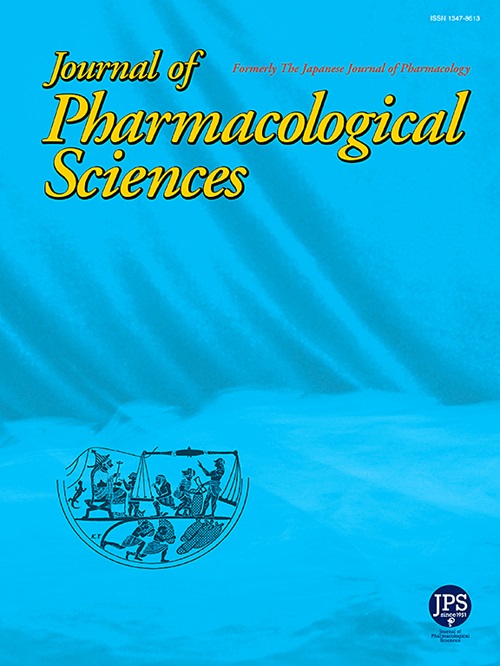Inhibitory effects of schisandrin A on contractions induced by spasmogenic candidates in porcine coronary arteries
IF 2.9
3区 医学
Q2 PHARMACOLOGY & PHARMACY
引用次数: 0
Abstract
The inhibitory effects and underlying mechanisms of schisandrin A (SA) on contractions induced by spasmogenic candidates and related chemicals were investigated in porcine coronary arteries (PCAs). SA (10−5–10−4 M) inhibited contractions induced by acetylcholine, histamine, serotonin, U46619 (thromboxane A2 mimetic), prostaglandin F2α, and endothelin-1 in a concentration-dependent manner. The inhibition of acetylcholine-induced contractions by SA was stronger than that by diltiazem, although both SA and diltiazem ultimately achieved similar levels of inhibition against other contractions. SA also inhibited high-KCl-induced contractions in PCAs and suppressed high-KCl-induced increases in intracellular Ca2+ concentrations in A7r5 cells. However, SA (10−4 M) did not inhibit SKF-96365-sensitive phenylephrine-induced contractions, despite potently inhibiting high-KCl-induced contraction in the guinea pig thoracic aorta. SA did not strongly inhibit NaF-induced contractions in Ca2+-free solution containing 0.2 mM EGTA. Furthermore, SA inhibited muscarinic receptor binding in mouse cerebral cortex and inhibited carbachol-induced increases in intracellular Ca2+ concentrations in 293T cells expressing muscarinic M3 receptors. These findings indicate that SA inhibits coronary artery contractions induced by spasmogens primarily through the inhibition of L-type Ca2+ channels (LCCs) and exerts an anticholinergic and LCC inhibitory effect on acetylcholine-induced contractions.
五味子素A对猪冠状动脉痉挛候选物引起的收缩的抑制作用
本文研究了五味子素A (schisandrin A, SA)对猪冠状动脉(PCAs)痉挛候选物及相关化学物质引起的收缩的抑制作用及其机制。SA(10−5-10−4 M)以浓度依赖性方式抑制乙酰胆碱、组胺、5 -羟色胺、U46619(血栓素A2模拟物)、前列腺素F2α和内皮素1诱导的收缩。SA对乙酰胆碱诱导的收缩的抑制强于地尔硫卓,尽管SA和地尔硫卓最终对其他收缩的抑制水平相似。SA还抑制高kcl诱导的PCAs收缩,抑制高kcl诱导的A7r5细胞内Ca2+浓度的增加。然而,SA(10−4 M)不抑制skf -96365敏感的苯肾上腺素诱导的收缩,尽管它能有效抑制高kcl诱导的豚鼠胸主动脉收缩。在含有0.2 mM EGTA的无Ca2+溶液中,SA对naff诱导的收缩没有强烈的抑制作用。此外,SA抑制小鼠大脑皮质毒蕈碱受体结合,抑制碳水化合物诱导的表达毒蕈碱M3受体的293T细胞内Ca2+浓度升高。这些结果表明,SA主要通过抑制l型Ca2+通道(LCC)抑制痉挛原诱导的冠状动脉收缩,并对乙酰胆碱诱导的收缩发挥抗胆碱能和LCC抑制作用。
本文章由计算机程序翻译,如有差异,请以英文原文为准。
求助全文
约1分钟内获得全文
求助全文
来源期刊
CiteScore
6.20
自引率
2.90%
发文量
104
审稿时长
31 days
期刊介绍:
Journal of Pharmacological Sciences (JPS) is an international open access journal intended for the advancement of pharmacological sciences in the world. The Journal welcomes submissions in all fields of experimental and clinical pharmacology, including neuroscience, and biochemical, cellular, and molecular pharmacology for publication as Reviews, Full Papers or Short Communications. Short Communications are short research article intended to provide novel and exciting pharmacological findings. Manuscripts concerning descriptive case reports, pharmacokinetic and pharmacodynamic studies without pharmacological mechanism and dose-response determinations are not acceptable and will be rejected without peer review. The ethnopharmacological studies are also out of the scope of this journal. Furthermore, JPS does not publish work on the actions of biological extracts unknown chemical composition.

 求助内容:
求助内容: 应助结果提醒方式:
应助结果提醒方式:


